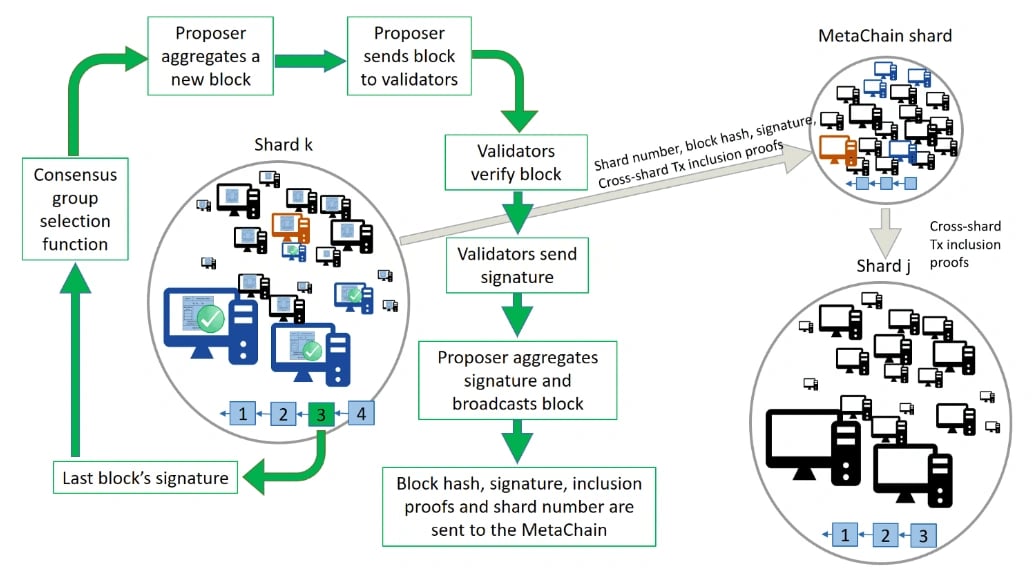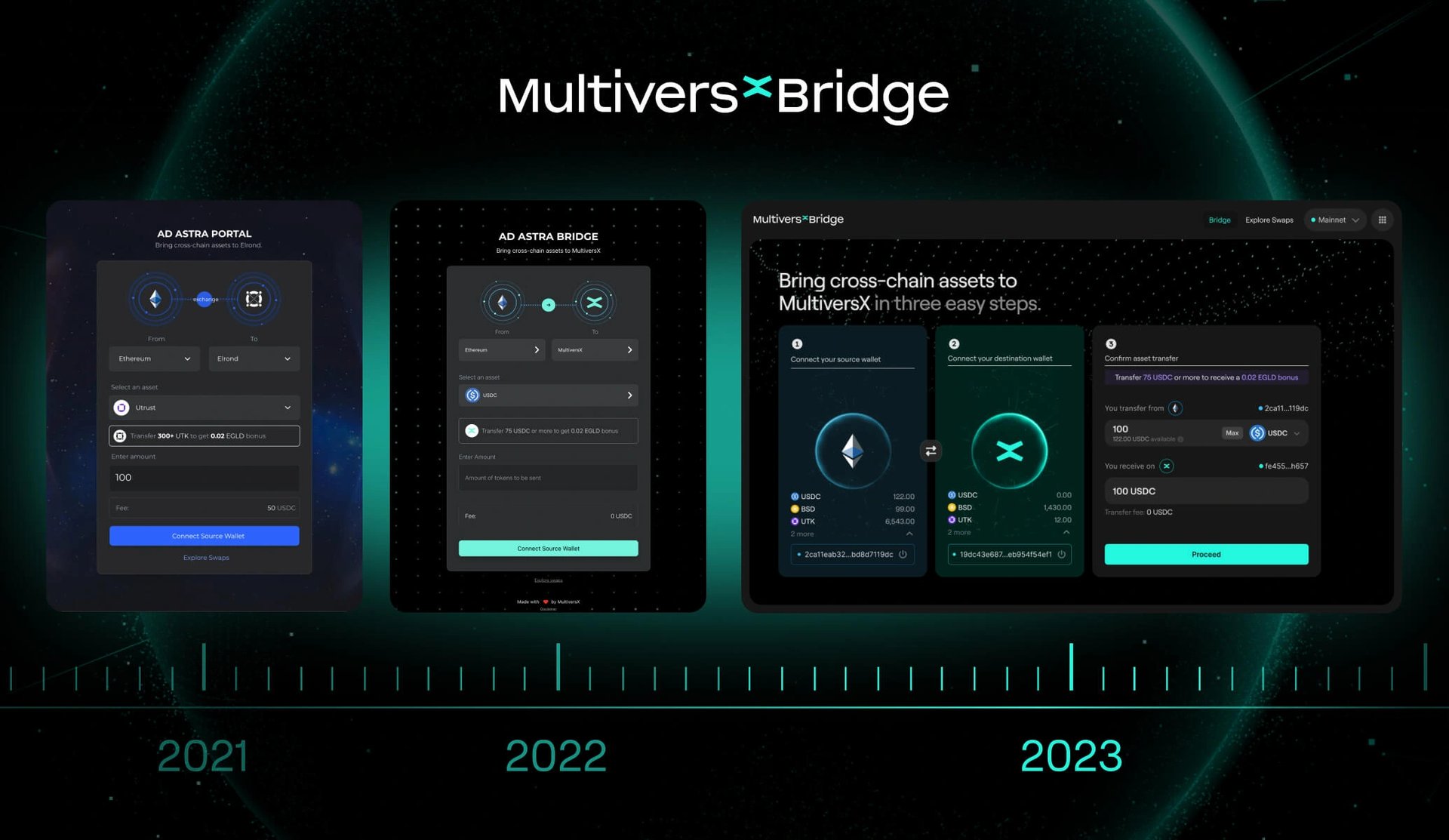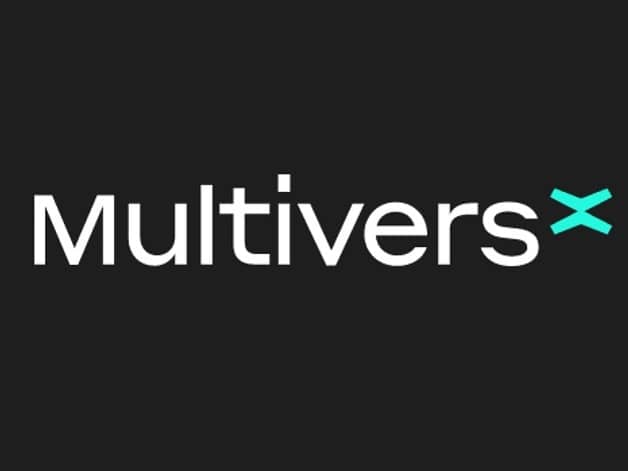Subscribe to wiki
Share wiki
Bookmark
MultiversX
MultiversX
MultiversX, formerly Elrond, is a decentralized smart contract platform founded by Lucian Todea, Benjamin Mincu, and Lucian Mincu. It is designed to provide the means for users to develop innovative decentralized applications (dApps), businesses, and societies, whilst creating immersive experiences within the metaverse, using the native token, EGLD to power the platform. [1]
Overview
MultiversX was initially founded by Lucian Todea, Benjamin Mincu, and Lucian Mincu, under the name Elrond in September 2017. The rebranding to MutiversX took place in November 2022, with the goal of expanding their focus to include the metaverse while maintaining their commitment to developing a scalable blockchain and various Web3 technologies. [2][3]
"Incredible amounts of creative energy are being poured into multiple compelling metaverse visions. MultiversX is building the collaborative framework and composable toolkit to set up the stage for a positive sum game of enormous stakes. For reimagining the entire spectrum of human experience and for reinventing the frontend of every business vertical." - Beniamin Mincu, CEO and founder
The platform utilizes quantum computing capabilities to simulate the physics and intricate structures of each parallel universe. This enables users to explore unique ecosystems, experience alternative historical events, and interact with entities from different realities. Virtual reality technology enhances the experience by providing visually immersive landscapes and allowing users to interact with objects and engage in meaningful conversations with virtual characters. [4]
MultiversX integrates artificial intelligence algorithms to create dynamic and responsive virtual entities within the multiverse. These entities possess distinct personalities, behaviors, and goals, adding depth and authenticity to the exploration. The technology is constantly evolving, with ongoing research and development efforts aimed at incorporating new scientific discoveries and user feedback to enhance the multiverse exploration experience. [4]
Infrastructure
MultiversX's infrastructure combines adaptive state sharding, a Secure Proof of Stake (SPoS) consensus mechanism, and the MultiversX Virtual Machine (VM) in an attempt to overcome scalability challenges and advance blockchain technology. This integrated approach aims to achieve higher transaction throughput, improved network efficiency, enhanced decentralization, and seamless cross-chain interoperability. [5]
Adaptive State Sharding
MultiversX incorporates an innovative approach called adaptive state sharding as part of its public blockchain infrastructure. Sharding involves dividing the blockchain and account state into smaller, manageable parts called shards. These shards are processed concurrently by different validators, allowing for parallel execution and increased scalability. MultiversX's adaptive nature enables the dynamic reorganization of shards based on active network nodes and their needs. This flexibility aims to achieve optimal utilization of network resources and enhances the overall performance and scalability of the blockchain. [5]
Sharding Types
MultiversX emphasizes three main types of sharding: network sharding, transaction sharding, and state sharding. [6]
Network Sharding
Network sharding focuses on grouping nodes into shards to optimize communication, allowing faster message propagation within shards. [6]
Transaction Sharding
Transaction sharding involves mapping transactions to specific shards for processing, usually based on the sender's address in an account-based system. [6]
State Sharding
State sharding involves each shard maintaining only a portion of the state. If the accounts involved in a transaction reside in different shards, executing that transaction will require the state to be updated in both shards and will involve message exchange between the nodes of the two shards. [6]
Node Shuffling
To ensure security and prevent collusion, MultiversX utilizes node shuffling in its sharding methodology. At the end of each epoch, a portion of validators from each shard are randomly and evenly redistributed to other shards. This reshuffling enhances unpredictability in shard configurations, discouraging the formation of unfair alliances. Reshuffled nodes undergo synchronization with their new shards for an entire epoch before becoming eligible validators. The list of nodes for redistribution is determined by the metachain, which calculates a randomness source based on the preceding metachain block. [6]
Secure Proof of Stake (SPoS)
MultiversX utilizes a consensus mechanism called Secure Proof of Stake (SPoS) to increase efficiency and trustworthiness of network agreement. SPoS employs a randomized selection process based on a calculated randomness source derived from the previous block. This approach aims to facilitate a fair and unpredictable selection of validators for each consensus round. Within a round, a new consensus group is formed, with a single validator designated as the block proposer responsible for creating the block. The remaining validators then validate and sign the proposed block using a modified BLS multisignature scheme with two communication rounds. [5][7]
SPoS offers short round durations, typically lasting a few seconds, which enhances network security by minimizing the window of opportunity for malicious actors to manipulate proposed blocks. Validator selection is based on the amount of staked tokens and their individual rating scores, reflecting their past performance. This combination of stake-based selection and performance-based rating promotes a meritocratic environment among validators, encouraging optimal operational practices. [5][7]
MultiversX Virtual Machine
MultiversX focuses on implementing the MultiversX Virtual Machine (VM), which is compatible with Ethereum's EVM. The VM implementation abstracts the underlying architecture, providing a proper layer of abstraction for smart contract developers. Cross-chain interoperability is achieved through adapter mechanisms at the VM level. [5]
The VM infrastructure of MultiversX is built on the K Framework, an executable semantic framework that ensures unambiguous definition of smart contract languages and eliminates potential bugs. MultiversX supports three low-level languages: IELE VM, KEVM, and WASM. Formal modeling and verification of smart contracts are possible due to their formal definition in the K Framework. [5]
Smart contracts in sharded architectures present challenges that require innovative solutions. MultiversX addresses these challenges by employing an asynchronous cross-shard execution model. This model allows for the creation of temporary accounts and the execution of actions that affect accounts in different shards, without the need for locking mechanisms or state movement across shards. [5]

Tokens
In the MultiversX ecosystem, EGLD, also known as "eGold" is the native token, powering the platform. Tokens on the ecosystem come in different forms: fungible, non-fungible, and semi-fungible. Each type of token serves specific purposes and exhibits unique characteristics. [8]
Fungible Tokens
Fungible tokens, such as cryptocurrencies, are interchangeable and hold the same value as other tokens of the same type. They provide a means of transferring value and can be used for various transactions within the network. [8]
Non-Fungible Tokens
Non-fungible tokens (NFTs) represent unique digital assets with distinct identification codes and metadata, making each one irreplaceable. NFTs find application in areas such as digital art, collectibles, and virtual real estate, where uniqueness and ownership are crucial. [8]
Semi-Fungible Tokens
Semi-fungible tokens, known as ESDTs (eStandard Digital Tokens), combine both interchangeable and unique properties. They offer flexibility in representing assets that may have varying degrees of uniqueness, enabling efficient management and transfer within the MultiversX network. [8]
ESDT
ESDT stands for eStandard Digital Token and serves as the standard for managing fungible, semi-fungible, and non-fungible tokens at the protocol level within the MultiversX network. ESDT tokens used in various ways for users and developers, leveraging MultiversX blockchain technology. [9]
Characteristics
ESDT tokens seamlessly integrate with MultiversX's sharding mechanism, simplifying user transactions. Users do not need to navigate the complexities of sharding when transacting with custom tokens. The protocol automatically handles sharding for ESDT transactions, increasing efficiency and reducing costs. [9][10]
The balances of ESDT tokens held by an account are directly associated with that account, ensuring secure and convenient token storage. This design enables accounts to hold balances of any number of custom tokens alongside their native EGLD balance. The protocol ensures the integrity of ESDT token storage, protecting against unauthorized modifications. [9][10]
ESDT tokens can be issued, owned, and held by any account on the MultiversX network. Both users and smart contracts have equal functionality, empowering them to manage tokens with ease. Smart contracts can react to ESDT transfers, allowing for flexible and dynamic token management. [9][10]
Staking
Staking is a crucial process that transforms a node from being a mere observer to a validator within the MultiversX network. Validators play a central role in the network's operation and are eligible for consensus and rewards. [11]
To stake a node, the operator must send a sum of 2500 EGLD to be locked in a system smart contract. For each node being staked, the operator must lock 2500 EGLD. This amount serves as collateral and will be returned through the unstaking process, which involves a final step known as unbonding. [11]
When a node becomes a validator through staking, it starts producing rewards. These rewards are transferred to the node operator's specified reward address. It is also possible to change the reward address after the staking process. [11]
Submitting Staking Transactions
Each staking or unstaking process requires a transaction to be sent to the Staking Smart Contract. These transactions must include all the necessary information encoded correctly and have a sufficient gas limit to ensure successful execution. [11]
To submit a staking transaction, users are required to provide: [11]
- 2500 EGLD per node and 0.006 EGLD per node as a transaction fee
- A unique validatorKey.pem file for each node
Services
xExchange
xExchange, released on December 10th, 2022, is a comprehensive trading platform offered by MultiversX. It provides users with a seamless and secure environment to buy, sell, and trade various digital assets. With advanced trading features, deep liquidity, and a user-friendly interface, xExchange aims to enable users to engage in efficient and secure crypto trading. [12][13]
xSpotlight
xSpotlight, launched on January 17th, 2023, is a platform designed by MultiversX to showcase and support innovative blockchain projects. It serves as a launchpad for promising projects, providing users with opportunities to participate in token sales and contribute to the growth of the blockchain ecosystem. xSpotlight aims to foster a vibrant and thriving community of blockchain enthusiasts and entrepreneurs. [12][14]
Explorer
The MultiversX Explorer is a tool that enables users to explore and analyze the MultiversX blockchain. Launched on January 31st, 2023, the Explorer offers a comprehensive view of transaction history, blocks, and addresses, enhancing transparency and accountability within the network. The Explorer provides real-time updates and detailed information to verify transactions and monitor the blockchain's activity. [12][15]
Wallet
The MultiversX Wallet, made available on February 14th, 2023, is a secure and user-friendly solution for managing digital assets. It supports multiple cryptocurrencies as well as NFTs and offers features such as secure storage, easy transfers, and transaction history. The Wallet integrates seamlessly with other MultiversX services, providing users with a convenient and reliable platform for managing their crypto assets. [12][16]
xPortal
xPortal, launched on February 28th, 2023, serves as a gateway to the MultiversX blockchain ecosystem. It provides users with access to a range of tools, services, and resources to interact with the blockchain and decentralized applications. xPortal aims to simplify user experience by offering a centralized hub for navigating the MultiversX ecosystem and engaging with various blockchain services. [12][17]
Bridge
The MultiversX Bridge, introduced on March 15th, 2023, enables interoperability between different blockchain networks. It allows users to transfer assets between compatible blockchains, promoting liquidity and expanding the reach of digital assets. Through their Bridge, MultiversX hopes to increase collaboration and connectivity among blockchain networks, enabling users to leverage the benefits of multiple platforms. [12][18]

See something wrong?
